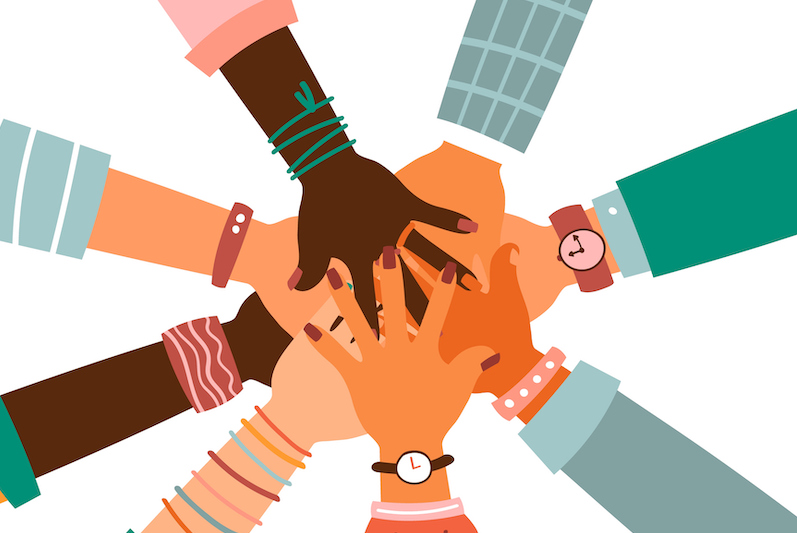SHADES of Life as Systemic Practice 4/5: Examining Whiteness
-
-
Sonya Welch-Moring
In 2017, a group of white therapists came together to explore ‘whiteness’. The group soon gained the interest of people from many different backgrounds. In the penultimate part of her series on exploring colour dynamics, Sonya Welch-Moring describes how her pioneering SHADES Circles are taking forward the task of creating space for ‘uncomfortable and difficult conversations’.

The Examining Whiteness group facilitated by Bea Millar and Suzanne Keys from Psychotherapists and Counsellors for Social Responsibility (PCSR) began in 2017 as an open meeting running four times a year. Initially it was a group for white therapists to come together and explore ‘whiteness’, as Bea and Suzanne explained on the PCSR website:
‘We no longer wanted to be part of a therapy profession and world where clients, trainees and practitioners of colour continue to experience oppression, discrimination and harm, where their experiences are not heard and valued and where white practitioners don’t do the necessary internal and relational work to stop this happening. It is an ongoing experience and active learning journey.’
There was so much interest from people of colour in this group that, after the first meeting, Examining Whiteness became a large group open to people from all ethnicities and heritages.
For three years – up until lockdown – the group continued to attract 40-50 participants from many different backgrounds, not just therapists, and many found the experience to be of great value. The SHADES of Life circle can be viewed as a follow-on from the Examining Whiteness group and is open to people from all culture-colour backgrounds (‘culture-colour’ is one of the phrases I am using as I try to find new ways to language the race conversation).
One of the perceptions that Bea had taken from facilitating the Examining Whiteness group (and that I share) is how difficult it can be for white people to take action on colour dynamics. There is often a sense of ‘not knowing what to do to make a difference’ and this hesitancy can often lead to the colour-blind approach. But as Bea and Suzanne point out in their workshop information, ‘participants need to be prepared to take part in uncomfortable and difficult conversations’.
For Bea and I, as a SHADES facilitation team, appropriate terminology for use during a SHADES circle was a dilemma. We had a long conversation but couldn’t reach agreement on shared language:
“I’m concerned about using language that might be offensive to people of colour,” Bea shared with me.
“That’s a common thing that I hear from white people,” I answered, “but I’m concerned that a focus on the ‘right language’ may be getting in the way. How can you take action if you are afraid of offending someone?”
“How can I take action if I don’t know what words are okay to use?” Bea pondered.
By the end of the conversation, we had decided to acknowledge that things are complex and there is often no easy or right answer, just a first or next step. However, we did agree to share our conversation and reflections in front of the group at the start of the workshop. This is both good systemic practice and can act as a form of ‘permission giving’, allowing people to take the risk to make a mistake in a safe space for dialogue.
This is the kind of ‘colour dynamics’ issue that you can explore in a SHADES circle using dollies as embodied representatives to reflect different shades of people. Bea and I have found that participants readily engage with the dollies, even if it is in a slightly abstract way. Or perhaps it is the opportunity to choose different shades of dollies that makes it engaging.
Either way, many participants have remarked that the process is a powerful way to explore colour dynamics and open up a space for conversation on a range of issues, including examining whiteness. (I am currently working on a new constellation and/or circle package specifically for white therapists, offering the opportunity to explore white ancestry – so watch this space…)
Next week, in the final blog post of this series, I will be talking about ‘the small steps that make a difference’.
Sonya Welch-Moring, with Bea Millar, is running a series of SHADES of Life circles, with a focus on colour dynamics in personal and professional contexts, in association with Psychotherapists and Counsellors for Social Responsibility. The next event is on June 25 and can be booked here.